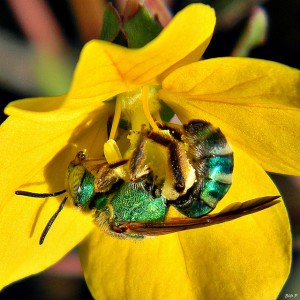Support Native Pollinators
go.ncsu.edu/readext?338712
en Español / em Português
El inglés es el idioma de control de esta página. En la medida en que haya algún conflicto entre la traducción al inglés y la traducción, el inglés prevalece.
Al hacer clic en el enlace de traducción se activa un servicio de traducción gratuito para convertir la página al español. Al igual que con cualquier traducción por Internet, la conversión no es sensible al contexto y puede que no traduzca el texto en su significado original. NC State Extension no garantiza la exactitud del texto traducido. Por favor, tenga en cuenta que algunas aplicaciones y/o servicios pueden no funcionar como se espera cuando se traducen.
Português
Inglês é o idioma de controle desta página. Na medida que haja algum conflito entre o texto original em Inglês e a tradução, o Inglês prevalece.
Ao clicar no link de tradução, um serviço gratuito de tradução será ativado para converter a página para o Português. Como em qualquer tradução pela internet, a conversão não é sensivel ao contexto e pode não ocorrer a tradução para o significado orginal. O serviço de Extensão da Carolina do Norte (NC State Extension) não garante a exatidão do texto traduzido. Por favor, observe que algumas funções ou serviços podem não funcionar como esperado após a tradução.
English
English is the controlling language of this page. To the extent there is any conflict between the English text and the translation, English controls.
Clicking on the translation link activates a free translation service to convert the page to Spanish. As with any Internet translation, the conversion is not context-sensitive and may not translate the text to its original meaning. NC State Extension does not guarantee the accuracy of the translated text. Please note that some applications and/or services may not function as expected when translated.
Collapse ▲- Identify Native Bees
- Attract them to your backyard
- Learn to build a bee house
Elsa Youngsteadt’s Top 5 reasons to garden for native bees:
5. Enrich your experience in your yard or garden. As recently as a few years ago, even I — a card-carrying entomologist — had only the vaguest sense of bee diversity. I would have mistaken many native bees for wasps and never even noticed a lot of others. North Carolina alone is home to more than 500 species of native bees. Bringing this diversity into focus through gardening and research has been a delight, heightening awareness of the habitats and seasons in my own backyard. We want to share this experience with you!
4. Embrace the truth about stinging. Male bees can’t sting, which leaves only half the population armed. And even female bees aren’t in the mood to sting while foraging on flowers. You may be surprised to find yourself spending time in your garden, peering at bees just inches from your nose, with no repercussions.
3. Beautify your yard. Bee food also happens to be pretty: Who doesn’t like flowers? In our workshop, we’ll review (and then go plant! and take home!) some of the best pollen and nectar sources for native bees. Landscape architect extraordinaire Anne Spafford will explain how to arrange your plants in an attractive, inviting way.
2. Enhance pollination in your garden. Bumblebees and other native bees are some of the most efficient pollinators of fruits and vegetables. Honey bees (native to Europe) are no good at pollinating tomatoes and their close relatives, for example, and they aren’t particularly efficient at fruit trees, either. By supporting a thriving population of diverse, native bees, you’ll have a greater variety of pollinators ready to step in and work the plants they know best.
1. Contribute to a bee-friendly landscape across North Carolina. Native bees, as a group, are fundamental to healthy agricultural and natural systems in our state. Without them, many plants couldn’t reproduce. By creating even a bit of bee habitat, you’ll join a movement that can collectively help improve conditions for these insects throughout our landscape.



